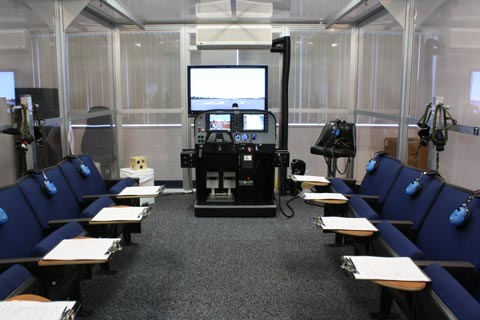
Until recently, if a pilot wanted to learn how he or she reacted to the effects of hypoxia, it meant signing up for a shot at the military’s few hypobaric altitude chambers scattered throughout the country. Now Embry Riddle Aeronautical University in Daytona Beach, Fla., has its own normobaric “altitude chamber” that’s open to the public.
ERAU’s normobaric High Altitude Lab doesn’t reduce air pressure like a hypobaric version does. Instead, it simply removes oxygen from the air to simulate the lack of oxygen at altitude. Participants will feel the effects of hypoxia and see its effects on others. Since the lab does not reduce pressure, participants do not experience trapped gases or decompression sickness (the bends) as with traditional altitude chambers. Of course, the downside to this method is the inability to simulate a rapid decompression that could occur in pressurized airplanes. Despite that shortcoming, this course offers an opportunity to experience hypoxia symptoms in a safe, controlled environment employing airline-style oxygen masks for recovery. However, it does not satisfy the FAR 61.31(g) high-altitude signoff, which requires tasks in a flight simulator or flight-training device.
While air machines extract oxygen from the lab enclosure, students are given cognitive, motor, and flight-related tasks to perform while noting the onset of hypoxic symptoms. There is also a Frasca flight simulator in the lab that replicates a Cessna 172 with a Garmin G1000 cockpit. Besides the lab portion, the four-hour course provides instruction in flight physiology similar to the military programs. ERAU says it is coordinating with the local Flight Standards District Office to allow pilots to receive credit toward the FAA’s Wings program.
Cost of the program is $375 per student, and the lab can seat up to eight. Candidates must be 18 years or older and hold an FAA medical certificate. To enroll, e-mail Assistant Professor Glenn Harmon or call 386/226-6843.


